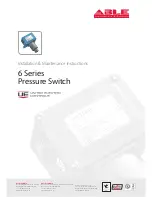
Ensure that you cannot see any wire lead. Only wire with insulation should extend from the terminal
screw.
Note
Figure 30: Connecting the Wires to the Low-Voltage DC Power (PSU2)
Step 8
Torque the captive screws (above the wires) to 8.5 in-lb (± 0.5 in-lb).
Step 9
Complete the power connection, following the instructions appropriate to your connection:
•
AC Power Connection
: Connect the other end of the line wire (the one connected to L) to the line terminal on the
AC-power source, and connect the other end of the neutral wire (the one connected to N) to the neutral terminal
on the AC power source.
•
DC Power Connection
: Connect the other end of the positive wire (the one connected to “ +”) to the positive
terminal on the DC-power source, and connect the other end of the negative wire (the one connected to “ –”) to
the negative terminal on the DC power source.
Ensure that you cannot see any wire lead. Only wire with insulation should extend from the terminal
screw.
Note
If you have two power supplies, repeat steps 1 through 9.
Note
Step 10
Close the power-input terminal cover.
Step 11
Use a ratcheting torque screwdriver to torque the screw to 7 in-lb (± 1 in-lb).
Step 12
Turn on the power at the AC or DC circuit.
Step 13
Verify that the PSU1 or PSU2 LED on the switch and PSU OK LED on the power-supply module are green.
Remove the Power-Supply Module
The power-supply modules are hot-swappable. By removing the power-supply modules, you can power off
the switch without disconnecting the wiring from the power-input terminal.
Step 1
Ensure that the power is off at the AC or DC circuits.
Locate the circuit breakers, turn them OFF, and lock out the circuit.
If the power is not off at the AC or DC circuit breaker, do not touch the power-input terminal.
Warning
Cisco Catalyst IE9300 Rugged Series Switch Hardware Installation Guide
46
Power Supply Installation
Remove the Power-Supply Module
















































